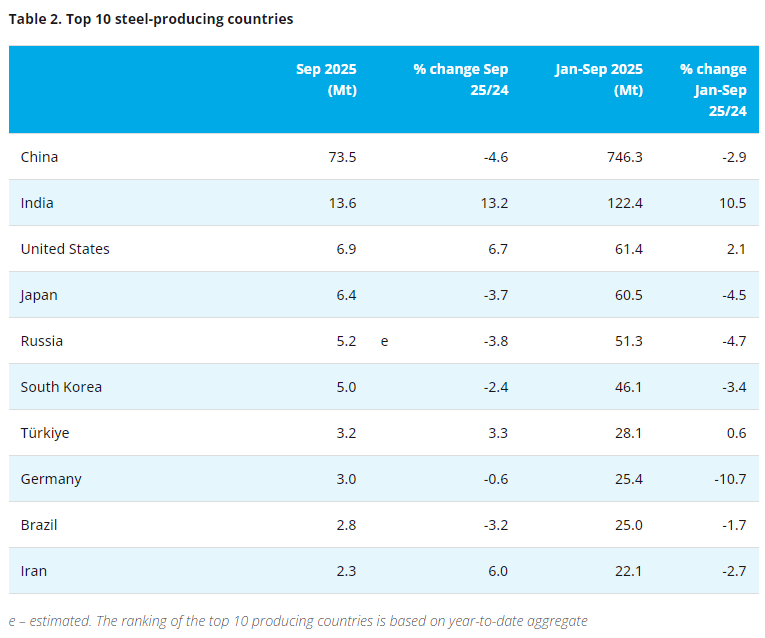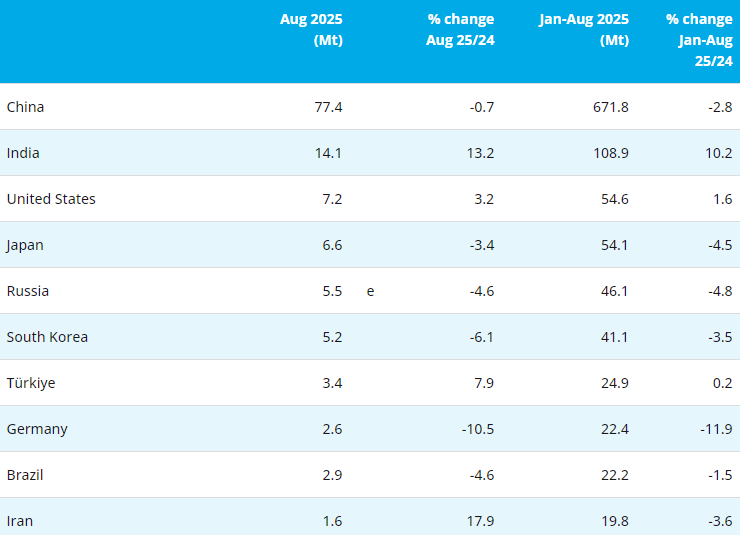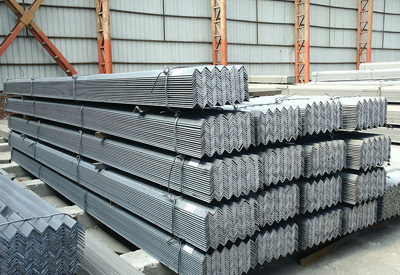Forecast aluminium demand growth of 60-100% over the rest of this decade could result in a severe squeeze in the supply of bauxite, leading to sharp increases in prices throughout the value chain.
“I see bauxite now like iron ore 15 years ago – it used to trade for as little as $50 per tonne and then went up to around $250,” a trader said. “Bauxite will probably do something like that. It’s just a matter of time.”
Prices for bauxite – the ore from which aluminium metal is extracted –have hovered around $20-40 per tonne, depending on the grade, for the last ten years, according to the trader. And most of the price is due to freight costs.
“It will shoot up to $60-70 per tonne probably within a year, and that will change the alumina prices,” he said, adding that should the bauxite market follow closely that of iron ore, deals will likely also move away from long-term contracts towards shorter term deals and spot sales, further increasing price risk for consumers.
“At the moment, bauxite prices are hardly 10% of the alumina costs, but will become 15-20% soon,” he said.
Such price increases will partly diminish the low-cost advantage that aluminium enjoys over competing materials in such sectors as automotive manufacturing, which could threaten the extraordinary demand growth forecasts made recently by many of the market’s major participants.
Speakers at MB sister publication AMM’s aluminium summit in New York in June saw huge growth prospects in aluminium through the urbanisation and industrialisation in China and India, as well as light-weighting needs in the autos market and opportunities in consumer electronics.
Alcoa ceo Klaus Kleinfeld even suggested that his prediction for aluminium demand to double by 2020 could even be a little undercooked. To double demand by 2020 requires an annual growth rate of 6.5%, while Kleinfeld predicted growth in 2011 of 12%, following growth of 13% in 2010.
Global aluminium consumption reached about 40 million tonnes in 2010, according to market participants.
While the market may look to record-high stock levels in both LME-listed and off-warrant warehouses to ease fears of supply issues around such demand growth, there is no such cushion in the market for bauxite. And with much of the world’s bauxite production owned by integrated aluminium producers, smelters without internal bauxite supplies will need new resources to come online in order to feed their production.
“If aluminium is going to grow, demand for bauxite is clearly going to grow as well,” an aluminium producer source said. “There are a lot of good deposits around that will need to be exploited, and you need investment to do that.”
There is no shortage of potential bauxite reserves. In a report released in June last year, Metal Bulletin Research (MBR) listed the three countries with the largest reserves as Vietnam, Guinea and Australia, with 10 billion tonnes, 8.6 billion tonnes and 7.9 billion tonnes respectively. Brazil and Jamaica hold reserves of 2.5 billion tonnes each.
Assuming average forecast demand growth between now and 2020, today’s global identified economic reserves of 33.8 billion tonnes will be depleted by 2057, though it is highly likely that reserves will increase as new discoveries are made and new technologies developed.
“There is no resource constraint, but someone needs to dig it out of the ground,” the producer source said.
And therein lies the rub. While there are undoubtedly huge bauxite resources around the world, most of the untapped reserves are now in areas where there remain significant barriers to investment.
The rich reserves in Guinea have drawn many of the world’s major aluminium producers, but significant infrastructure problems remain. The market expects to see a large refinery to convert bauxite to alumina – the oxide that represents the intermediate stage between bauxite and aluminium metal – but only after such obstacles are overcome.
“You need a good, low cost energy situation, and that’s one thing Guinea doesn’t have,” John Thuestad, president of Alcoa’s global primary products division, said in New York in June, while Dick Evans, former ceo of Rio Tinto Alcan, said that Guinea would have to become markedly more politically stable before any company would consider the vast financial outlay that a new refinery would require.
President Alpha Conde, who took power in December last year after what was widely considered the first truly credible election in Guinea's history, survived an assassination attempt on July 19.
Conde’s government has completed a thorough audit of mining companies operating in the country, forming a comprehensive review of all mining contracts and a new mining code. Reports say that the new code will retain the Guinea government’s 15% free carried interest in mining projects but will have a provision for the government to purchase as much as an additional 20% of the equity in mining ventures.
“Guinea is the obvious place, and you will find most players looking there to a larger or smaller extent,” Norsk Hydro cfo Jørgen Rostrup told MB. “But it takes longer and is more demanding than you might assume.”
In February, Hydro bought Vale SA’s upstream aluminium assets in Brazil, and not just to secure future bauxite and alumina supply for its own aluminium production.
“With the Vale acquisition in Brazil, we will in the not-too-distant future be two times as long in alumina as in aluminium, and will be a significant bauxite and alumina player,” Rostrup said.
“We did the Vale acquisition simply because we felt there would be a changing dynamic in the market,” he added. “We believe we will see even more firmness and value in that part of the chain.”
The market will not only need access to new reserves to feed growing demand, but also to replace traditional sources of bauxite that will soon become unavailable.
China, whose demand for bauxite is forecast by MBR to reach 80.6 million tpy in 2020 from 51.9 million tonnes in 2010, has traditionally sourced much of its bauxite from Indonesia. But Indonesia’s government has said it will ban mineral and metal ore exports from the country by 2014.
PT Aneka Tambang (Antam), which has traditionally sold bauxite into China from Indonesia, is now building a 300,000 tpy chemical grade alumina (CGA) refinery in Tayan, in the country’s West Kalimantan province, to process the country’s bauxite.
“If it is able to enforce the export ban, it will have a big impact,” the producer source said.
Vietnam’s bauxite reserves remain largely untapped, and will likely be predominantly processed in Vietnam rather than becoming available to the global market. The country awarded the engineering, procurement and construction contract for two alumina projects to a subsidiary of Chinalco, with both plants expected to produce 600,000 tpy.
“The first alumina from Vietnam will come in September. There is a lot of potential there,” the producer source said.
Outside of China, demand for bauxite is forecast to grow to 27.5 million tonnes in Asia by 2020 from 7.6 million tonnes in 2010, while South American demand is expected to grow 156% to 39 million tonnes in the same period.
The impact of huge projected demand growth and apparent difficulties in securing bauxite supply from certain regions will be felt most keenly in prices.
“Put it this way: it’s not going to get any better than it is now,” the trader said. “You need to pay for reliability of supply.”
“I see bauxite now like iron ore 15 years ago – it used to trade for as little as $50 per tonne and then went up to around $250,” a trader said. “Bauxite will probably do something like that. It’s just a matter of time.”
Prices for bauxite – the ore from which aluminium metal is extracted –have hovered around $20-40 per tonne, depending on the grade, for the last ten years, according to the trader. And most of the price is due to freight costs.
“It will shoot up to $60-70 per tonne probably within a year, and that will change the alumina prices,” he said, adding that should the bauxite market follow closely that of iron ore, deals will likely also move away from long-term contracts towards shorter term deals and spot sales, further increasing price risk for consumers.
“At the moment, bauxite prices are hardly 10% of the alumina costs, but will become 15-20% soon,” he said.
Such price increases will partly diminish the low-cost advantage that aluminium enjoys over competing materials in such sectors as automotive manufacturing, which could threaten the extraordinary demand growth forecasts made recently by many of the market’s major participants.
Speakers at MB sister publication AMM’s aluminium summit in New York in June saw huge growth prospects in aluminium through the urbanisation and industrialisation in China and India, as well as light-weighting needs in the autos market and opportunities in consumer electronics.
Alcoa ceo Klaus Kleinfeld even suggested that his prediction for aluminium demand to double by 2020 could even be a little undercooked. To double demand by 2020 requires an annual growth rate of 6.5%, while Kleinfeld predicted growth in 2011 of 12%, following growth of 13% in 2010.
Global aluminium consumption reached about 40 million tonnes in 2010, according to market participants.
While the market may look to record-high stock levels in both LME-listed and off-warrant warehouses to ease fears of supply issues around such demand growth, there is no such cushion in the market for bauxite. And with much of the world’s bauxite production owned by integrated aluminium producers, smelters without internal bauxite supplies will need new resources to come online in order to feed their production.
“If aluminium is going to grow, demand for bauxite is clearly going to grow as well,” an aluminium producer source said. “There are a lot of good deposits around that will need to be exploited, and you need investment to do that.”
There is no shortage of potential bauxite reserves. In a report released in June last year, Metal Bulletin Research (MBR) listed the three countries with the largest reserves as Vietnam, Guinea and Australia, with 10 billion tonnes, 8.6 billion tonnes and 7.9 billion tonnes respectively. Brazil and Jamaica hold reserves of 2.5 billion tonnes each.
Assuming average forecast demand growth between now and 2020, today’s global identified economic reserves of 33.8 billion tonnes will be depleted by 2057, though it is highly likely that reserves will increase as new discoveries are made and new technologies developed.
“There is no resource constraint, but someone needs to dig it out of the ground,” the producer source said.
And therein lies the rub. While there are undoubtedly huge bauxite resources around the world, most of the untapped reserves are now in areas where there remain significant barriers to investment.
The rich reserves in Guinea have drawn many of the world’s major aluminium producers, but significant infrastructure problems remain. The market expects to see a large refinery to convert bauxite to alumina – the oxide that represents the intermediate stage between bauxite and aluminium metal – but only after such obstacles are overcome.
“You need a good, low cost energy situation, and that’s one thing Guinea doesn’t have,” John Thuestad, president of Alcoa’s global primary products division, said in New York in June, while Dick Evans, former ceo of Rio Tinto Alcan, said that Guinea would have to become markedly more politically stable before any company would consider the vast financial outlay that a new refinery would require.
President Alpha Conde, who took power in December last year after what was widely considered the first truly credible election in Guinea's history, survived an assassination attempt on July 19.
Conde’s government has completed a thorough audit of mining companies operating in the country, forming a comprehensive review of all mining contracts and a new mining code. Reports say that the new code will retain the Guinea government’s 15% free carried interest in mining projects but will have a provision for the government to purchase as much as an additional 20% of the equity in mining ventures.
“Guinea is the obvious place, and you will find most players looking there to a larger or smaller extent,” Norsk Hydro cfo Jørgen Rostrup told MB. “But it takes longer and is more demanding than you might assume.”
In February, Hydro bought Vale SA’s upstream aluminium assets in Brazil, and not just to secure future bauxite and alumina supply for its own aluminium production.
“With the Vale acquisition in Brazil, we will in the not-too-distant future be two times as long in alumina as in aluminium, and will be a significant bauxite and alumina player,” Rostrup said.
“We did the Vale acquisition simply because we felt there would be a changing dynamic in the market,” he added. “We believe we will see even more firmness and value in that part of the chain.”
The market will not only need access to new reserves to feed growing demand, but also to replace traditional sources of bauxite that will soon become unavailable.
China, whose demand for bauxite is forecast by MBR to reach 80.6 million tpy in 2020 from 51.9 million tonnes in 2010, has traditionally sourced much of its bauxite from Indonesia. But Indonesia’s government has said it will ban mineral and metal ore exports from the country by 2014.
PT Aneka Tambang (Antam), which has traditionally sold bauxite into China from Indonesia, is now building a 300,000 tpy chemical grade alumina (CGA) refinery in Tayan, in the country’s West Kalimantan province, to process the country’s bauxite.
“If it is able to enforce the export ban, it will have a big impact,” the producer source said.
Vietnam’s bauxite reserves remain largely untapped, and will likely be predominantly processed in Vietnam rather than becoming available to the global market. The country awarded the engineering, procurement and construction contract for two alumina projects to a subsidiary of Chinalco, with both plants expected to produce 600,000 tpy.
“The first alumina from Vietnam will come in September. There is a lot of potential there,” the producer source said.
Outside of China, demand for bauxite is forecast to grow to 27.5 million tonnes in Asia by 2020 from 7.6 million tonnes in 2010, while South American demand is expected to grow 156% to 39 million tonnes in the same period.
The impact of huge projected demand growth and apparent difficulties in securing bauxite supply from certain regions will be felt most keenly in prices.
“Put it this way: it’s not going to get any better than it is now,” the trader said. “You need to pay for reliability of supply.”
Copyright © 2013 Ferro-Alloys.Com. All Rights Reserved. Without permission, any unit and individual shall not copy or reprint!
- [Editor:editor]



 Save
Save Print
Print Daily News
Daily News Research
Research Magazine
Magazine Company Database
Company Database Customized Database
Customized Database Conferences
Conferences Advertisement
Advertisement Trade
Trade















 Online inquiry
Online inquiry Contact
Contact

Tell Us What You Think